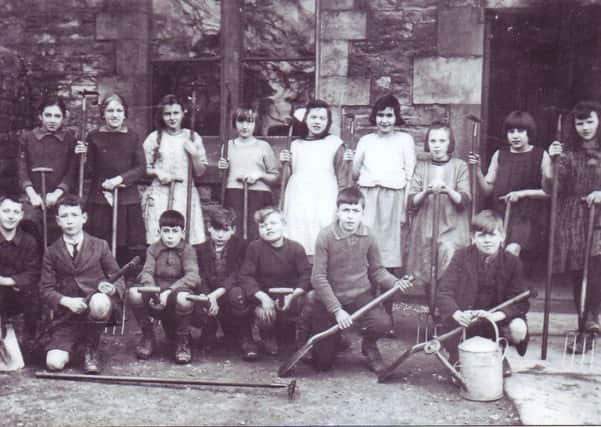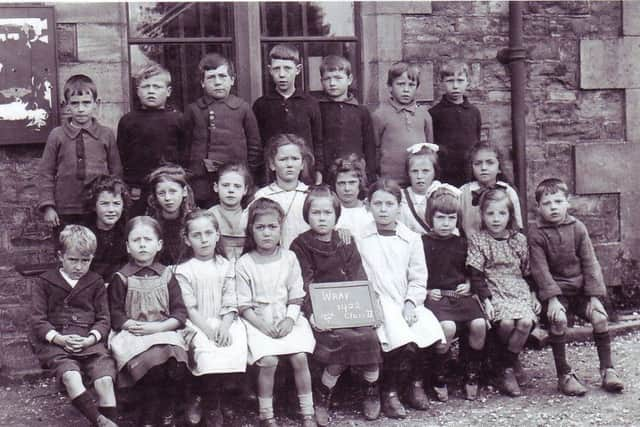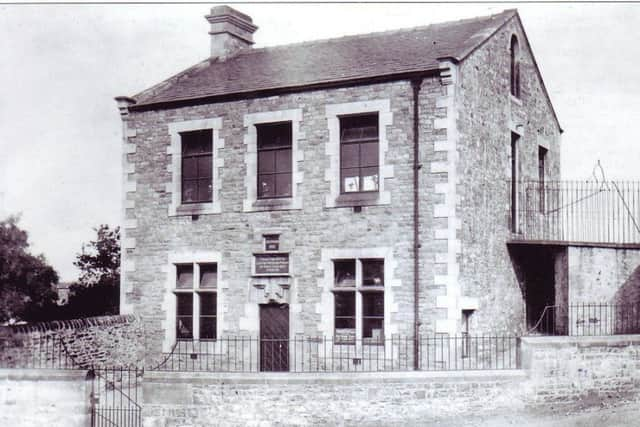Tackling problems of late arrivals and illness in the early 20th century at Wray School


The following information is taken from a combination of school logbook and articles in Wray Parochial magazine.
On June 11, 1900, at a meeting of the school finance committee, it was stated that the late arrival of the children at school, especially in the morning, was a very serious hindrance to the progress of the school.
Advertisement
Hide AdAdvertisement
Hide AdBeing anxious to remove this hindrance, the managers appealed to the parents of the scholars to cooperate with them in promoting punctuality.


It was stated that morning school starts at 9am.
On October 21, 1908, Mr Smith, the headmaster, reported a disagreement between himself and Mrs Jeffreys over school matters and the request of Mrs Jeffreys to run the infant department as a separate school.
This was turned down and the two were urged to pull together.
Also in 1908, the school inspectors commented on the presence of very young children in the infant class.


Advertisement
Hide AdAdvertisement
Hide AdThe infant teacher was told not to admit children under four years of age during the present half year and after Christmas to admit none under five.
On June 13, 1910, the rent for the Yorkshire Penny Bank was increased to 15 shillings per year from 12/6d.
In July 1912, estimates were received for the installation of water closets in the school and school house.
Estimates were received from T Parkinson of Caton for £84-8-0d and C.H Slinger of Bentham for £74-18-0d. This included all work and fittings but not joiner’s work.
Advertisement
Hide AdAdvertisement
Hide AdC.H.Slinger’s estimate was accepted and the joinery work was let out to Thomas Parker of Wray. Until 1914, Mr Smith was the headmaster. His entries in the school logbook are full of references to poor attendance, through sickness, wet weather, snow and haymaking. The attendance officer was a frequent visitor. The medical officer also called regularly and on a number of occasions, the school was closed through, or to avoid, epidemics of colds, whooping cough, measles and diptheria. On July 8, 1914, Mr Smith, the headmaster, died. He had been teaching at Wray School for 30 years.
There were 21 applicants for the vacant post of headmaster with Mr J.W.Dodd of St Mary’s School, Lancaster being appointed with an additional clause to his contract, namely a rent was to be charged for the use of the school house and garden of £10 per year.
World War I seemed to make little impact on school life; there are few references to it in the school log book.
The school continued to be inspected by the church officials.
Advertisement
Hide AdAdvertisement
Hide AdAfter a visit in July 1915, it was stated that there are a good many religious dissenters in the school who do not enter with much spirit into the lessons on the catechism which are given to them.
At the same time, Mr Dodd is to be commended for insisting upon the meaning of words, which is at the foundation of all successful teaching and which is as profitable to dissenting as to other children.
It was stated that the order of the whole school is good and the written work is neat and accurate. In December 1915, the children had been provided with wool to knit scarves for the soldiers.
The Wray School Inspection Report, March 1916: the following report was received from the Board of Education and reproduced in the March 1916 edition of Wray Parochial magazine:
Advertisement
Hide AdAdvertisement
Hide Ad“The school is in a generally efficient condition. The infants are kindly and sympathetically taught, and are making creditable progress; the written work of the elder children is as a rule neat and Accurate; and the up-standard girls are taking a sensible course of sewing and knitting.
“Latterly, more consideration has been given to practical methods of teaching and to the fostering of originality and imagination; further development along these lines is to be expected.
“Speech training and colour work also admit of improvement; in reference to these some suggestions were made during the visits of inspection.
“Since the issue of the last report some new maps and desks have been provided, and new offices of a good type have been built. The new offices are a great improvement on the old, but care is needed to prevent misuse by the Infant boys.”
Advertisement
Hide AdAdvertisement
Hide AdIn July 1916, in response to an appeal to English children to join in an empire tribute to the destitute children of Belgium, Wray schoolchildren collected contributions of £2-15s-9d which had been forwarded to the National Committee for Relief in Belgium.
On December 22, 1916, the children of the school gave a concert at Wray House convalescent home for wounded soldiers.
They were invited to repeat the concert on February 27. Most of the soldiers present at the first concert had since left the home and been replaced by fresh arrivals, so that although the two concerts were much the same. it was practically a different audience, which listened on this second occasion.
Before leaving, the children were served with cake and milk.
Advertisement
Hide AdAdvertisement
Hide AdIn May 1917, school children, in response to an appeal from the Overseas Club, contributed 50 pennies for parcels to be sent to sailors and soldiers in the war.
The gift was acknow-ledged by postcard as follows: Many thanks for your kind gift of tobacco and cigarettes, from Driver S.Richards, R.F.A.
In October 1917, the explosion at the national Shell filling factory at White Lund caused a great disturbance even as far away as Wray.
Mr Dodd noted on October 2 that only 20 children were at school by 9.20am, “The majority having been up all night wandering about the roads.”
Advertisement
Hide AdAdvertisement
Hide AdTaken from the Wray monthly magazine: “There was much excitement in the village when peace was declared on November 11, 1918.
“The glad news reached our village in the evening and caused not a little excitement.
“Our two church bells were made to swing, our newly-revived brass band mustered and paraded the streets and Union Jacks appeared in various places. On the following day, Sunday, the National Anthem and specially selected hymns were sung in church.”
We have to hope that the children at Wray School were given a few days holiday in celebration of peace.
n There will be an exhibition of the history of Wray Endowed School in Wray Church during Scarecrow week from Saturday, April 27 to the early May bank holiday, May 6.